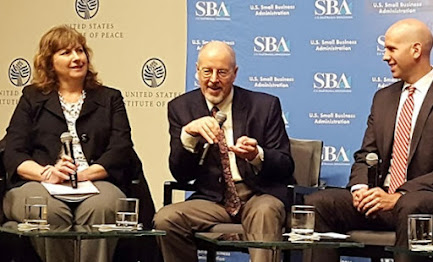Dateline San Diego, California, July 12:
Today is my last day at
ESET, the company that I have worked for since 2011, and from which I am now retiring.
But wait there's more news! In early September, Chey and I will be relocating to the city of Coventry, England, birthplace of the
pedal-chain bicycle,
Jaguar cars,
the turbojet, my parents,
my brother, and me.
I will be writing more about this move as time permits, with the latest developments signposted on this blog (
scobb.net).
If you want to stay in touch, and I hope you do, you can use email to reach me (use scobb at scobb dot net). You can also find me on Twitter, where I am
@zcobb. I'm on
LinkedIn as well and you may even spot me on Facebook - where my profile is stcobb - but I don't go there very often. In the past I have published on
Medium and I may write some more articles there in the future.
So, that's the news of the day from where I am. What follows are a few random thoughts on the occasion of my departure, retirement, and relocation.
For the record, we will be flying to England, not sailing. I say this because I have twice moved from North America to England on ships. Once when I was six, and again in 1975 on the
TSS Stefan Batory.
Also for the record, I am leaving ESET with very positive feelings. I have never worked this long for anyone other than myself. In my opinion, ESET continues to set the standard for technical excellence, customer support, and dedication to helping the world enjoy safer technology. It was a privilege to work with such a great team of security researchers and I know that they will carry on the mission with courage, integrity, reliability, and passion. (Disclaimer: nobody's paying me to say this, I don't own stock or have any other financial stake in ESET.)
My relationship with ESET began exactly eight years ago this week, with a phone call about a job. The company wanted someone to do vendor neutral security research and education, which was great for me because that's been a passion of mine since the late 1980s. Adding to the appeal: the company wanted me to be based in California, my favorite state. (Chey and I met in California over 30 years ago, but left in the late 1980s to live in Scotland.)
As for my future, who knows? I do know I will keep researching and opining, mainly about technology. I will continue to blog, and there is a book I want to write. Coventry is home to a pair of excellent universities and there are more in the surrounding area - often referred to as "The Midlands" - including my alma mater, the University of Leicester. Doing some form of teaching is a possibility.
So, when Chey and I get properly settled into our new home, it is possible that I will reemerge, maybe as a something like a part-time, semi-retired, independent researcher and public-interest technologist. (I have been watching fellow security veteran Bruce Schneier
move in this direction.)
At this point, and if this was a press conference, I would take questions. But I only have time for one right now, so I will answer the one I've been asked many times in recent weeks: Do you think you will miss San Diego?
Yes, I will miss San Diego, and not just because of the weather and the views. We have met so many wonderful people here, many of whom I have worked with in a business climate that is unique in my experience: San Diego has to be the Capital of Collaboration. This is great place to work on technology projects that benefit the community, the nation, and the world. I have often said that cybersecurity is the healthcare of IT, and
San Diego is a center of excellence in both meatspace healthcare and cyberspace security. (The cuisine is pretty awesome too.)
On that note, I thank you for reading this far and wish you all the best. As the saying goes:
So long, and thanks for all the fish tacos!
Stephen
(Note: Image of ESET/Coventry combines a photo that I took plus photography by Si Chun Lam. Some rights reserved. This image is licensed under the Creative Commons Attribution-ShareAlike 4.0 International (CC BY-SA 4.0) Licence.)









